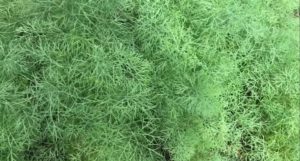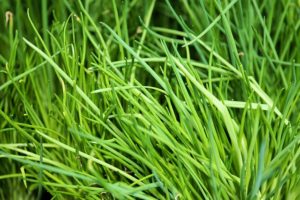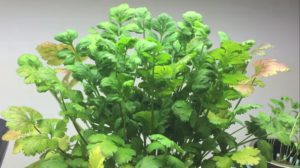Did you have a sudden craving for a pesto pasta and thought about your well-grown basil in your vegetable garden? Well, it’s just about right to finally harvest them, don’t you think? But, make sure to harvest your basil without killing the entire plant by following these techniques and important information as explained below.
Basil is mostly known in Western cuisine, particularly in Italian cuisine. It is used as toppings on pizza, herbal spice for pasta and other dishes, a distinctive flavor added in salads, and many more.
Not only is basil beneficial in the kitchen, this herb being a family of mint also provides a wide range of health advantages and is filled with minerals, nutrients, and antioxidants. Traditionally, basil is used as an herbal medicine, specifically in treating snake bites, common colds, and other cases of inflammation.
Whether it is for a savory or therapeutic use, what matters most is you do not waste some good fresh basil by harvesting it the wrong way.
GROWING CONDITIONS
To be able to harvest a good quality basil, you have to, of course, make sure that it grows in a favorable condition. While this kind of herb is relatively easy to grow, there are still certain conditions that you need to look out for when growing your own backyard basil.
- Weather Conditions
If you plan on planting basil in your backyard, make sure not to do it during the cold season. Basil is sensitive to cold weather and even a thin layer for frost can kill it. So, unless the temperature is just about right, do not waste your time and resources trying to grow a basil in cold weather.
- Sun Exposure
When choosing a spot to plant and grow your basil, make sure that it gets an appropriate amount of sunlight. Basil requires at least 6 hours of sunlight exposure everyday, otherwise it may appear as dull and sparse.
To make sure that your basil plant receives an adeq uate amount of sunlight, you might want to position it facing the east side.
- Soil Requirements
Before planting your basil, make sure that the soil has warmed up to around 70ºF (21°C) on the average or at the very least 50°F (10°C). However, the temperature should not drop any lower than 50°F (10°C) or the plant will not survive in the cold.
Additionally, basil grows well in moist soil but see to it that it is well drained. Whether you are growing it directly on the ground or in a container, a proper drainage is always a requirement.
- Watering
Basil is actually not a high maintenance kind of herb. You need not to water it regularly; just make sure that the soil is always kept moist. In any case that you observe the soil is dry to touch, that is when you need to water your plant.
Remember to water onto its base and be careful not to pour water all over its leaves.
- Spacing
In growing basil, it is also important to observe the spacing between each plant. A 12 to 18 inch spacing is recommended since a single basil plant grows between 12 and 24 inches tall, depending on the variety. If you have a limited space in your garden, you might want to consider planting a smaller variety of it, say, spicy globe basil.
Moreover, if you want to grow other types of plants and herbs along with your basil, it is best that you choose a plant that has a similar soil and sunlight exposure requirements as basil like tomatoes and parsley, which by the way, also make a great team in salads.
Harvest Period
Harvesting basil is truly a win-win situation. You get fresh pieces of herbs for your kitchen or therapeutic needs and at the same time you are helping your plant to grow richer and healthier.
Try to make it a habit to regularly pick some leaves off of your plant even if you do not actually need them because it will be more beneficial to your plant in the long run. After all, you can always store the harvested leaves for later use.
You can start picking its leaves after 50 to 75 days or when it reaches about 6 to 8 inches tall. In other cases, harvesting starts as soon as the plant has grown at least 6 sets of leaves.
You may opt to harvest basil anytime of the day as you need it, however It is highly recommended to do it early in the morning when its leaves are juicer and fresher.
Unlike other herbs and plants, basil can actually be harvested anytime you would like and need since harvesting regularly prevents flower production and consequently generates an abundant growth of basil leaves. However, it may be quite sensitive during the cold season and easily reacts negatively even to light frost to the extent of entirely dying.
Process Of Harvesting Basil
Harvesting basil may be done in two different techniques depending on the amount of leaves you would like to harvest. The common way to harvest basil in smaller amounts is by directly picking off its leaves, while pruning or cutting off a part of the plant’s stem may be required for you to harvest in a larger amount.
Just a reminder to constantly measure your plant before proceeding with the harvest. Make sure that it is at least 6 inches tall and do not let it get any taller than 8 inches.
- Harvesting in a smaller amount
If you just need a few pieces of basil leaves, say to garnish your vegan pizza, you may just directly pick the leaves off of the plant. You may use either scissors or just your fingers, whichever is more convenient for you. But, by doing so, make sure you do not tear or damage it’s stem.
While you pick the leaves, you may also take this opportunity to pinch its base where it meets the stem to encourage an even bushier growth. The same way is also recommended to be done to its flower buds.
- Harvesting in a larger amount
Cutting back the whole stem of the plant is another way to harvest basil in a much larger amount. Work your way from the top down to the bottom, cutting a third of the total height of your plant. This process is called pruning which is proven to speed up basil’s growth.
Do not forget to pinch or cut about a quarter inch above a leaf node. If done right, you can expect another good harvest in just a couple of weeks. Pruning your basil every week or two will keep the entire plant healthier and bushier.
Harvesting Tips
No one wants to waste some good, fresh herbs so you might want to cut the entire plant about 3 inches above the ground before it gets withered and killed by the frost. On the brighter side, you can take advantage of the abundant supply of leaves by making some scrumptious pesto pasta and use the stems as compost for your other plants.
Moreover, if you want to have an abundant supply of basil, both leaves and seeds, you might want to grow two separate basil plants for two different purposes. The first one will be mainly to harvest the greens, while the other one is to reap the seeds. The only difference is you will let the latter flower.
More importantly, never be afraid that you will run out of basil. Remember, the more frequent your harvest, the greener and bountiful your basil plant will be.
Storing And Using
Once you have collected all the basil leaves, sort the fresh green ones from the yellow or dead ones. Wash everything thoroughly to make sure that you totally get rid of the pests, insects, dusts, or pesticide residue if you use any.
There are plenty of ways to store basil that will keep its flavor and nutrients intact even for a few weeks or even months.
- Keep it in a dry, airtight container
After rinsing the fresh basil, air dry or pat it dry using a clean paper towel. Once all the moisture has been absorbed, you can put it in an airtight container. This process can keep your basil still fresh even for a few weeks.
- Freeze the leaves
Remove the leaves from the stem and drop the leaves in a boiling water for 5 to 10 seconds. Quickly transfer it into a bowl full of ice and after a few minutes lay it on a dry paper towel. Afterwards, you can store the basil leaves in a plastic container and keep in the freezer for several months.
- Keep it fresh in the water
Store the entire stem in a jar with a water level of just about an inch. Make sure to keep it away from direct sunlight and store it in room temperature and you will have fresh basil for two long weeks.




